The Nobel Prize and RAND
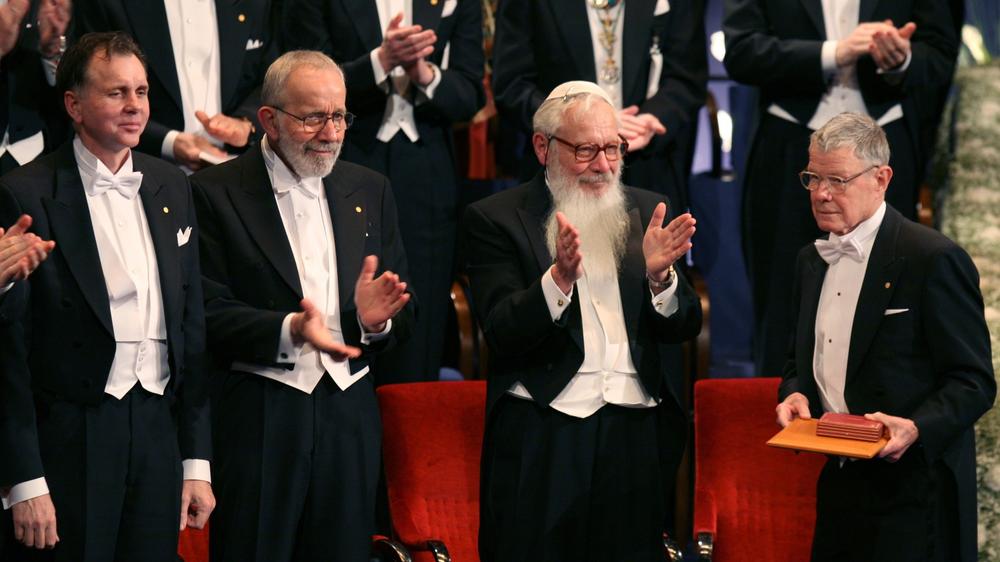
Thomas C. Schelling (right) is applauded by fellow Nobel laureates at the Stockholm Concert Hall, Sweden, December 10, 2005
Photo by Pawel Kopczynski/Reuters
RAND's unique intellectual environment and reputation for empirical, nonpartisan, independent analysis have attracted an impressive corps of researchers over the years.
Many Nobel laureates have been affiliated with RAND at some point in their careers. Some have been employees, others served RAND as consultants, while others still have served in an advisory capacity.
“RAND was an almost ideal place for anyone interested in performing research that was both aesthetically pleasing and also pragmatic. During this period, path-breaking work in computer science, game theory, linear programming, dynamic programming, and applied economics was being done at RAND, both by permanent staff and visitors from major universities. The atmosphere was collegial and the schedule flexible. Most research projects were chosen by the investigators, and additional work on more fundamental issues was encouraged and generously supported.”
— William F. Sharpe, Nobel-winning economist who joined RAND in 1956
Research Staff Laureates and Contributors
Luis Walter Alvarez
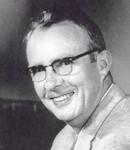
Luis Walter Alvarez, a RAND consultant from 1945 to 1951, and again from 1954 to 1966, was awarded the Nobel Prize in Physics in 1968 for work that included the discovery of many resonance particles (subatomic particles having extremely short lifetimes and occurring only in high-energy nuclear collisions).
He studied physics at the University of Chicago and earned a Ph.D. in 1936. He joined the faculty of the University of California, Berkeley, in 1936, becoming physics professor in 1945 and professor emeritus in 1978.
In 1938, Alvarez discovered that some radioactive elements decay by orbital-electron capture. That is, an orbital electron merges with its nucleus, producing an element with an atomic number smaller by one. In 1939, he and Felix Bloch made the first measurement of the magnetic moment of the neutron, a characteristic of the strength and direction of its magnetic field.
Alvarez worked on microwave radar research at the Massachusetts Institute of Technology, Cambridge (1940 to 1943), and participated in the development of the atomic bomb at the Los Alamos Scientific Laboratory in New Mexico in 1944 and 1945. He suggested the technique for detonating the implosion type of atomic bomb. He also participated in the development of microwave beacons, linear radar antennas, the ground-controlled landing approach system, and a method for aerial bombing using radar to locate targets.
After World War II, Alvarez helped construct the first proton linear accelerator and developed the liquid hydrogen bubble chamber in which subatomic particles and their reactions are detected.
RAND bibliographyKenneth Joseph Arrow
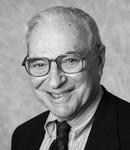
Kenneth Joseph Arrow was a RAND consultant from 1948 until he died in 2017. He was co-winner with Sir John R. Hicks of the Nobel Prize in Economics in 1972.
Arrow is known for his contributions to welfare economics and to general economic equilibrium theory. Perhaps his most startling thesis (built on elementary mathematics) was the “impossibility theorem” or “Arrow's theorem.” This holds that, under certain conditions of rationality and equality, it is impossible to guarantee that a ranking of societal preferences will correspond to rankings of individual preferences when more than two individuals and alternative choices are involved.
After receiving his Ph.D. from Columbia University in 1951, he taught at the University of Chicago (1948 to 1949), at Stanford University (1949 to 1968), and at Harvard University (1968 to 1979). He returned to Stanford in 1979.
RAND bibliographyRobert J. Aumann
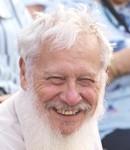
Robert J. Aumann, a RAND consultant from 1962 to 1974, shares the 2005 Nobel Prize in Economics with Thomas Schelling for having enhanced understanding of conflict and cooperation through game-theory analysis.
He received his Ph.D. in mathematics in 1955 from the Massachusetts Institute of Technology. After finishing his doctorate, Aumann joined Princeton University. In 1956, he immigrated to Israel and became an instructor at the Institute of Mathematics of the Hebrew University of Jerusalem. Promoted to professor in 1968, he remains a member of the department.
Aumann has been associated as an “outside teacher” with the Departments of Statistics and Mathematics of Tel-Aviv University. He has been a member of the U.S. National Academy of Sciences since 1985, a member of the Israel Academy of Sciences and Humanities since 1989, and a Foreign Honorary Member of the American Academy of Arts and Sciences since 1974.
He received the Israel Prize in Economics in 1994 and the Harvey Prize in Science and Technology (awarded by the Israel Institute of Technology) in 1983. He was awarded honorary doctorates by the University of Bonn in 1988, by the Université Catholique de Louvain in 1989, and by the University of Chicago in 1992. He was elected fellow of the Econometric Society in 1966, and served for a number of years on its Council and its Executive Committee. Aumann was the president of the Israel Mathematical Union and is an honorary member of the American Economic Association.
RAND bibliographyGary Stanley Becker
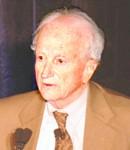
Gary Stanley Becker, a RAND consultant in 1957 and again from 1968 to 1980, was awarded the Nobel Prize in Economics in 1992. He applied the methods of economics to aspects of human behavior previously considered the exclusive domain of sociology, criminology, anthropology, and demography.
Becker's central premise was that rational economic choices, based on self-interest, govern most aspects of human behavior—not just the purchasing and investment decisions traditionally thought to influence economic behavior.
He was educated at Princeton University and the University of Chicago, where he earned his Ph.D. in 1955. He taught economics at the University of Chicago until 1957, when he began teaching at Columbia University. In 1970, he returned to the University of Chicago as a professor of economics. In 1983, he also became a professor of sociology.
RAND bibliographyRonald Harry Coase
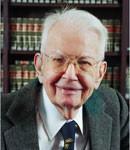
Ronald Harry Coase, affiliated with RAND in the 1960s and '70s, was awarded the Nobel Prize in Economics in 1991.
Coase conducted pioneering work on the ways in which transaction costs and property rights affect business and society. In his most famous paper, The Problem of Social Cost (1960), he developed what later became known as the Coase theorem.
While at RAND, he wrote one of his key publications, Problems of Radio Frequency Allocation.
Coase attended the London School of Economics, where he received a bachelor of commerce degree in 1932 and a Ph.D. in economics in 1951. He was employed at various universities, including the London School of Economics (1935 to 1951), the University of Buffalo (1951 to 1958), the University of Virginia (1958 to 1964), and the University of Chicago (beginning in 1964), where he became professor of economics in the law school, taught at the Graduate School of Business, and was editor of the Journal of Law and Economics from 1964 to 1982.
RAND bibliographyGerard Debreu
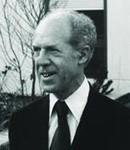
Gerard Debreu, affiliated with RAND during the early 1950s, won the 1983 Nobel Prize in Economics for his fundamental contribution to the theory of general equilibrium.
In 1950, Debreu joined the Cowles Commission for Research in Economics (now the Cowles Foundation for Research in Economics) at the University of Chicago, moving with the commission to Yale University in 1955. He received his doctorate in economics from the University of Paris in 1956. He later became a professor of economics (1962) and mathematics (1975) at the University of California at Berkeley, where he taught until 1991.
Debreu's classic monograph, Theory of Value: An Axiomatic Analysis of Economic Equilibrium, was published in 1959. In it, Debreu provided the mathematical underpinnings for the phenomenon of equilibrium in supply and demand that was first articulated as the “invisible hand” by Adam Smith in 1776. Debreu also developed methods by which to analyze the factors that influence equilibrium.
RAND bibliographyPeter A. Diamond
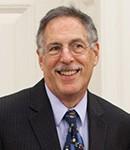
Peter A. Diamond was a graduate student intern at RAND while working on his Ph.D. at the Massachusetts Institute of Technology (MIT). In 2010, he won the Nobel Prize in Economics along with Dale T. Mortensen and Christopher A. Pissarides for their analysis of markets with search frictions. Diamond is best known for his work on U.S. Social Security policy. He is currently a professor at MIT.
Murray Gell-Mann
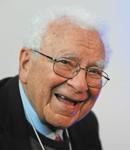
Murray Gell-Mann, a RAND consultant from 1956 to 1989 and from 1991 to 1994, received the Nobel Prize in Physics in 1969 for his work on the theory of elementary particles.
Gell-Mann's “eightfold way” theory brought order to the chaos created by the discovery of some 100 particles in the atom's nucleus. He found that all of those particles, including the neutron and proton, are composed of fundamental building blocks that he named “quarks.” The quarks are permanently confined by forces coming from the exchange of “gluons.” He and others later constructed the quantum field theory of quarks and gluons, called “quantum chromodynamics,” which seems to account for all the nuclear particles and their strong interactions.
Gell-Mann is the Robert Andrews Millikan Professor of Theoretical Physics Emeritus at the California Institute of Technology, where he taught from 1955 until 1993. He was a director of the J.D. and C.T. MacArthur Foundation from 1979 to 2002. He is currently a member of the National Academy of Sciences, a member of the American Academy of Arts and Sciences, a fellow of the American Physical Society, a foreign member of the Royal Society of London, and a member of the Council on Foreign Relations. He serves on the board of the Wildlife Conservation Society. He is a former Citizen Regent of the Smithsonian (1974 to 1988) and a former member of the President's Science Advisory Committee (1969 to 1972). He also served on the President's Committee of Advisors on Science and Technology from 1994 to 2001. Gell-Mann is a distinguished fellow of the Santa Fe Institute.
RAND bibliographyJames Heckman
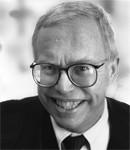
Photo by Reuters
James Heckman was a RAND consultant in 1974 and again from 1975 to 1976. He and Daniel L. McFadden shared the Nobel Prize in Economics in 2000. Heckman won the award for his pioneering work in econometrics and microeconomics. He received his Ph.D. in economics from Princeton University in 1971. He is most famous for introducing the concept of “selection bias” into modern econometrics.
Leonid “Leo” Hurwicz
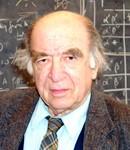
Leonid “Leo” Hurwicz, a RAND consultant through the University of Chicago during the late 1940s and '50s, was awarded the Nobel Prize in Economics in 2007 for laying the foundation for mechanism design theory. He shares the award with Eric S. Maskin and Roger B. Myerson.
Mechanism design, described as “the art of producing institutions that align individual incentives with overall social goals,” is fundamental to solving political and economic dilemmas that range from climate change to timber auctions to organ-donor matching. Hurwicz proposed that desired outcomes can be achieved only if people are provided with the right kind of incentives.
Hurwicz earned a law degree from Warsaw University, then studied at the London School of Economics. He was a research assistant to the economist Paul Samuelson, who won the Nobel Prize for economics in 1970, and to Oskar Lange at the University of Chicago. He never earned an economics degree. In 1951, he became a professor of economics and mathematics at the University of Minnesota, then Regents' Professor of Economics in 1969, and the Curtis L. Carlson Professor of Economics in 1989.
Hurwicz received the National Medal of Science in 1990 in behavioral and social science for his “pioneering work on the theory of modern decentralized allocation mechanisms.”
RAND bibliographyHenry Alfred Kissinger
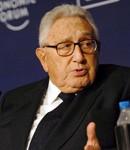
Henry Alfred Kissinger, a RAND consultant from 1961 to 1969, received the Nobel Peace Prize in 1973. He was the 56th Secretary of State of the United States from 1973 to 1977, continuing to hold the position of Assistant to the President for National Security Affairs that he first assumed in 1969 until 1975. After leaving government service, he founded Kissinger Associates, an international consulting firm, of which he is chairman.
He has served as chairman of the National Bipartisan Commission on Central America (1983 to 1984) and a consultant to the Department of State (1965 to 1968), the United States Arms Control and Disarmament Agency (1961 to 1968), the National Security Council (1961 to 1962), the Weapons Systems Evaluation Group of the Joint Chiefs of Staff (1959 to 1960), the Operations Coordinating Board (1955), Director of the Psychological Strategy Board (1952), and the Operations Research Office (1951).
Tjalling Charles Koopmans
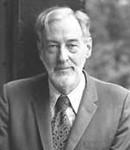
Tjalling Charles Koopmans, a RAND consultant in 1948 and again from 1952 to 1966, shared the Nobel Prize in Economics in 1975 with Leonid Kantorovich of the Soviet Union. The two men independently developed activity analysis, a rational method for allocating resources to attain a given economic objective at the lowest cost.
Koopmans was educated in mathematics and physics at the universities of Utrecht and Leiden, obtaining his Ph.D. in economics at Leiden in 1936. In 1940, he went to the United States, where he worked for the British Merchant Shipping Mission during World War II. He was concerned with the selection of shipping routes that would minimize the total cost of transporting required quantities of goods, available at various locations in America, to specified destinations in England.
In 1944, Koopmans joined the Cowles Commission for Research in Economics at the University of Chicago, where he extended his technique to a wide variety of economic problems. When the commission was relocated to Yale University in 1955, Koopmans moved with it, becoming professor of economics. He wrote a widely read book on the methodology of economic analysis, Three Essays on the State of Economic Science (1957).
RAND bibliographyRobert Lempert
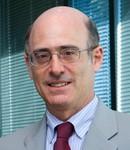
Robert Lempert, a senior scientist at RAND, is an expert in science and technology policy, with a special focus on climate change, energy, and the environment. He was a contributor to the Intergovernmental Panel on Climate Change, which was awarded the Nobel Peace Prize in 2007 along with Vice President Al Gore.
An internationally-known scholar in the field of decisionmaking under conditions of deep uncertainty, Lempert is a fellow of the American Physical Society, a member of the National Academy of Science's Climate Research Committee, and a member of the Council on Foreign Relations. He has led studies on climate change policy, the environment, energy, national security strategies, and science and technology investment strategies for clients that include the White House Office of Science and Technology Policy, the U.S. Department of Energy, the National Science Foundation, and several multinational firms.
Lempert is co-founder and president of the firm Evolving Logic, which builds decision support computer systems for government and business clients.
RAND bibliographyWillard Frank Libby
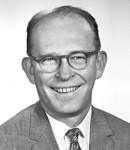
Willard Frank Libby, a RAND consultant in from 1953 to 1954 and again from 1969 to 1980, was a chemist whose technique of carbon-14 (or radiocarbon) dating provided an extremely valuable tool for archaeologists, anthropologists, and earth scientists. He was honored with the Nobel Prize in Chemistry in 1960.
Libby received his Ph.D. from the University of California, Berkeley, where he was a member of the faculty from 1933 to 1945. He was with the Institute for Nuclear Studies at the University of Chicago (1945 to 1959) and was professor of chemistry at the University of California, Los Angeles, until his death in 1980.
While associated with the Manhattan Project (1941 to 1945), Libby helped develop a method for separating uranium isotopes, an essential step in the creation of the atomic bomb. In 1946, he showed that tritium, the heaviest isotope of hydrogen, was produced by cosmic radiation. The following year, he and his students developed the carbon-14 dating technique. This technique is used to date material derived from former living organisms as old as 50,000 years. It measures small amounts of radioactivity from the carbon-14 in organic or carbon-containing materials and can identify older objects as those having less radioactivity. Libby also served on the U.S. Atomic Energy Commission (1955 to 1959) and wrote Radiocarbon Dating.
RAND bibliographyHarry M. Markowitz
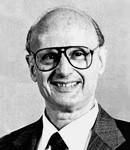
Harry M. Markowitz was a RAND researcher from 1951 to 1957 and 1960 to 1962, and a consultant from 1962 to 1967. He was the co-winner (with Merton H. Miller and William F. Sharpe) of the 1990 Nobel Prize in Economics for theories on evaluating stock-market risk and reward and on valuing corporate stocks and bonds.
This involved Markowitz's “portfolio theory,” which sought to prove that a diversified or “optimal” portfolio—one that mixes assets to maximize return and minimize risk—could be practical. His techniques for measuring the risk associated with various assets and his methods for mixing assets became routine investment procedures. He also developed a computer language called SIMSCRIPT, used to write economic-analysis programs.
Markowitz studied at the University of Chicago, earning a Ph.B. in 1947, a master's degree in 1950, and a Ph.D. in 1954. As a RAND researcher, he met Sharpe and George Dantzig. Markowitz cited Dantzig's work on optimization techniques as an influence. After RAND, he held various positions with Consolidated Analysis Centers, Inc. (1963 to 1968), the University of California, Los Angeles (1968 to 1969), Arbitrage Management Company (1969 to 1972), and IBM's T.J. Watson Research Center (1974 to 1983) before becoming a professor of finance at Baruch College of the City University of New York. In 1994, he became a research professor of economics at the University of California, San Diego.
RAND bibliographyMaria Goeppert Mayer

Maria Goeppert Mayer, a consultant at RAND from 1953 to 1970, shared one-half of the 1963 Nobel Prize in Physics with J. Hans D. Jensen of West Germany for their proposal of the shell nuclear model. (The other half of the prize was awarded to Eugene P. Wigner of the United States for unrelated work.)
Mayer studied physics at the University of Göttingen, earning her Ph.D. in 1930. Over the next nine years, she was associated with Johns Hopkins as a volunteer associate. During that time, she collaborated with Karl Herzfeld and her husband, chemical physicist Joseph E. Mayer, in the study of organic molecules. In 1939, Mayer and her husband received appointments in chemistry at Columbia University, where she worked on the separation of uranium isotopes for the atomic bomb project.
Although the Mayers remained at Columbia throughout World War II, Mayer also lectured at Sarah Lawrence College from 1942 to 1945. After the war, Mayer's interests centered increasingly on nuclear physics. In 1945, she became a volunteer professor of physics in the Enrico Fermi Institute for Nuclear Studies at the University of Chicago. She received a regular appointment as full professor in 1959.
From 1948 to 1949, Mayer published several papers on the stability and configuration of protons and neutrons that constitute the atomic nucleus. She developed a theory that the nucleus consists of several shells, or orbital levels, and that the distribution of protons and neutrons among these shells produces the characteristic degree of stability of each species of nucleus. A similar theory was developed at the same time in Germany by J. Hans D. Jensen, with whom she subsequently collaborated on Elementary Theory of Nuclear Shell Structure (1955). The work established her as a leading authority in the field. Also noted for her work in quantum electrodynamics and spectroscopy, Mayer accepted an appointment at the University of California at San Diego in 1960, as did her husband.
John Forbes Nash, Jr.
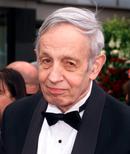
Photo by Fred Prouser/Reuters
John Forbes Nash, Jr., a consultant at RAND from 1950 to 1954, was awarded the 1994 Nobel Prize in Economics for his landmark work, first begun in the 1950s, on the mathematics of game theory. He shared the Nobel Prize with the Hungarian-American economist John C. Harsanyi and German mathematician Reinhard Selten.
In 1948, Nash received bachelor's and master's degrees in mathematics from the Carnegie Institute of Technology (now Carnegie Mellon University) in Pittsburgh, Pennsylvania. Two years later, at age 22, he completed his doctorate at Princeton University, publishing his influential thesis “Non-cooperative Games” in the journal Annals of Mathematics. He joined the faculty of the Massachusetts Institute of Technology in 1951 but resigned in the late '50s after bouts of mental illness. He then began an informal association with Princeton.
RAND bibliographyEdmund S. Phelps

Photo by Brendan McDermid/Reuters
Edmund S. Phelps, whose first job was a year at the RAND Corporation (1959 to 1960), was awarded the 2006 Nobel Prize in Economics for extending the understanding of tradeoffs between economic objectives, such as inflation and employment.
Recognized for his work on economic growth at Yale's Cowles Foundation in the 1960s, Phelps is best known for introducing an expectations-based microeconomics into the theory of employment determination and price-wage dynamics. Phelps's most seminal work is his rudimentary theory of a natural rate of unemployment—its existence, how its size is determined, and how market forces may drive unemployment from it.
Phelps received his B.A. at Amherst College in 1955 and his Ph.D. at Yale University in 1959. He started his academic career at Yale, then moved to University of Pennsylvania and, in 1971, to Columbia University where he has been McVickar Professor of Political Economy since 1982. He is also the director of Columbia's Center on Capitalism and Society.
RAND bibliographyPaul Anthony Samuelson

Paul Anthony Samuelson, a RAND consultant from 1948 to 1990 and member of the Governor's Board of what is now the Pardee RAND Graduate School, was awarded the Nobel Prize in Economics in 1970 for his fundamental contributions to nearly all branches of economic theory.
Samuelson earned a bachelor's degree from the University of Chicago in 1935 and a Ph.D. from Harvard University in 1941. He became a professor of economics at the Massachusetts Institute of Technology in 1940. He also served as an economic adviser to the U.S. government.
Samuelson contributed to many areas of economic theory through powerful mathematical techniques that he employed essentially as puzzle-solving devices. His Foundations of Economic Analysis (1947) provides the basic theme of his work, with the universal nature of consumer behavior seen as the key to economic theory. Samuelson studied the dynamics and stability of economic systems, the incorporation of the theory of international trade into that of general economic equilibrium, the analysis of public goods, capital theory, welfare economics, and public expenditure. Of particular influence has been his mathematical formulation of the interaction of multiplier and accelerator effects and, in consumption analysis, his development of the theory of revealed preference.
RAND bibliographyThomas Schelling
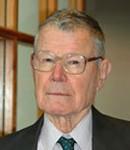
Thomas Schelling, recipient of the 2005 Nobel Prize in Economics, had a nearly 50-year affiliation with RAND, including one year as a staff economist in the late 1950s. He shared the prize with another longtime RAND consultant, mathematician Robert J. Aumann. The Nobel committee said that the two researchers, who worked independently, had “enhanced our understanding of conflict and cooperation through game-theory analysis.”
Schelling was best known as the author of The Strategy of Conflict (1960), which applied strategic thinking to practical problems in politics and business. In its preface, he wrote, “RAND is more than a collection of people; it is a social organism characterized by intellect, imagination, and good humor. RAND is not responsible for the shapes my ideas have taken … but I hope it will … take satisfaction from its responsibility for some of the ideas taking any shape at all.”
Schelling also wrote influential articles, including a 1960 piece about accidental war that examined fictional accounts of nuclear catastrophe. Film director Stanley Kubrick found Schelling's description of one story, “Red Alert” by Peter George, so intriguing that he turned it into Dr. Strangelove, the classic 1964 black comedy about the Cold War, and consulted with Schelling during its filming.
Schelling donated his papers to the Pardee RAND Graduate School. He was a longtime supporter of the school, serving on its academic advisory board and as a member of its Board of Governors from the school's founding, in 1998, to 2003. Over the years, he contributed in another way—by advising students on their dissertations.
RAND bibliographyTheodore William Schultz
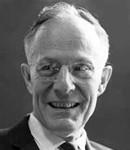
Theodore William Schultz, a RAND consultant from 1956 to 1972, shared the 1979 Nobel Prize in Economics with Sir Arthur Lewis for his influential studies of the role of “human capital”—education, talent, energy, and will—in economic development.
Schultz graduated from South Dakota State College in 1927 and earned his Ph.D. in 1930 at the University of Wisconsin, where he was influenced by John R. Commons and other reform-minded thinkers. He taught at Iowa State College (1930 to 1943) and at the University of Chicago (1943 to 1972), where he was head of the economics department from 1946 to 1961.
In Transforming Traditional Agriculture (1964), Schultz challenged the prevailing view that farmers in developing countries were irrational in their unwillingness to innovate. He argued that, to the contrary, the farmers were making rational responses to high taxes and artificially low crop prices set by their governments. Schultz also noted that governments in developing countries lacked the agricultural extension services critical for training farmers in new methods. He viewed agricultural development as a precondition for industrialization.
Among his publications were Agriculture in an Unstable Economy (1945), The Economic Value of Education (1963), Economic Growth and Agriculture (1968), Investment in Human Capital (1971), and Investing in People: The Economics of Population Quality (1981).
Lloyd S. Shapley
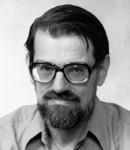
Lloyd S. Shapley, a research mathematician at RAND from 1948 to 1950 and from 1954 to 1981, was awarded the 2012 Nobel Prize in Economics jointly with Alvin E. Roth. Working independently, they were honored for their research concerning “the theory of stable allocations and the practice of market design.” Roth's work involved adapting and applying the theoretical foundations laid by Shapley years earlier.
Shapley used cooperative game theory to study and compare different matching methods. A key issue is to ensure that a matching is stable in the sense that two agents cannot be found who would prefer each other over their current counterparts. He and his colleagues derived an algorithm to ensure a stable matching. Shapley was able to show how the specific design of a method may systematically benefit one or the other side of the market. The algorithm would help match, for instance, organ donors with patients needing transplants, people seeking a marriage partner, or students seeking the right college to attend.
Shapley was a student at Harvard University when he was drafted into the military in 1943. While serving in the Army Air Forces in China, he received the Bronze Star for breaking the Soviet weather code. After the war, he returned to Harvard, earning a bachelor's degree in mathematics in 1948, then working at RAND until 1950. He left to attend Princeton University and completed his doctorate in 1953. The following year, he embarked on what would be a 27-year career as a research mathematician at RAND. He also taught “Game Theory and Applications” at what is now the Pardee RAND Graduate School. He left in 1981 to join the faculty of UCLA.
When Shapley died in 2016, Michael D. Rich, president and CEO of RAND, said, “Lloyd Shapley, who is credited with naming the book and film A Beautiful Mind, indeed possessed one of his own. His contributions to game theory have and will continue to impact the field of economics for years to come.”
RAND bibliography Read more about Shapley's Nobel PrizeWilliam Forsyth Sharpe
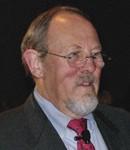
William Forsyth Sharpe was a researcher at RAND from 1957 to 1961 and again in 1965, as well as a consultant from 1963 to 1964 and again from 1965 to 1971. He shared the Nobel Prize in Economics in 1990 with Harry M. Markowitz and Merton H. Miller. Their early work established financial economics as a separate field of study.
Sharpe received the Nobel Prize for his “capital asset pricing model,” which explains how securities prices reflect potential risks and returns. His theory showed that the market pricing of risky assets enabled them to fit into an investor's portfolio because they could be combined with less risky investments. His theories led to the concept of “beta,” a measurement of portfolio risk. Investment analysts frequently use a beta coefficient to compare the risk of one stock against the risk of the broader stock market.
Sharpe received his Ph.D. in economics from the University of California at Los Angeles in 1961. He was influenced by the theories of Markowitz, who he met while working at RAND. Later, Sharpe taught economics at the University of Washington from 1961 to 1968 and at Stanford University from 1970 until he retired from teaching to head his own investment consulting firm.
RAND bibliographyHerbert Alexander Simon
Herbert Alexander Simon was a RAND consultant from 1951 to 1976. He was known for his contributions to a number of fields, including psychology, mathematics, statistics, and operations research, all of which he synthesized in a key theory that earned him the 1978 Nobel Prize in Economics.
Simon earned his Ph.D. in political science from the University of Chicago in 1943. After holding various posts in political science, he became a professor of administration and psychology at Carnegie Mellon University in 1949, later becoming the Richard King Mellon University Professor of Computer Science and Psychology.
Simon is best known for his work on the corporate decisionmaking theory known as “behaviorism.” In his influential book Administrative Behavior (1947), Simon sought to replace the highly simplified classical approach to economic modeling—based on a concept of the single decisionmaking, profit-maximizing entrepreneur—with an approach that recognized multiple factors that contribute to decisionmaking. According to Simon, this theoretical framework provides a more realistic understanding of a world in which decisionmaking can affect prices and outputs.
RAND bibliographyVernon L. Smith
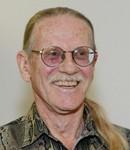
Photo by Hyungwon Kang/Reuters
Vernon L. Smith, a RAND consultant in 1959, was the co-recipient of the Nobel Prize in Economics in 2002 for his use of laboratory experiments in economic analysis, which laid the foundation for the field of experimental economics. He shared the award with Israeli-born psychologist Daniel Kahneman.
Smith studied electrical engineering at the California Institute of Technology (B.S., 1949), then switched to economics at the University of Kansas (M.A., 1951) and Harvard (Ph.D., 1955). He taught and conducted research at Purdue University (1955 to 1967), Brown University (1967 to 1968), the University of Massachusetts (1968 to 1975), Caltech (1973 to 1975), and the University of Arizona (1975 to 2001), where he was Regents' Professor of Economics from 1988. In 2001, he was named professor of economics and law at George Mason University.
Much of Smith's commercial work was related to the deregulation of energy in the United States, Australia, and New Zealand. He served on the editorial boards of several publications and wrote extensively on subjects ranging from capital theory and finance to natural resource economics and experimental economics.
RAND bibliographyRobert Merton Solow
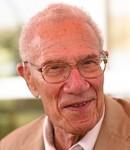
Robert Merton Solow, a consultant at RAND from 1951 to 1961 and again from 1962 to 2002, was awarded the 1987 Nobel Prize in Economics for his important contributions to theories of economic growth.
Solow received his B.A. (1947), M.A. (1949), and Ph.D. (1951) from Harvard University. He began teaching economics at the Massachusetts Institute of Technology in 1949 and became a full professor there in 1958. He also served on the Council of Economic Advisers in 1961 and 1962 and was a consultant to that body from 1962 to 1968.
In the 1950s, Solow developed a mathematical model illustrating how various factors can contribute to sustained national economic growth. Contrary to traditional economic thinking, he showed that advances in the rate of technological progress do more to boost economic growth than do capital accumulation and labor increases. A Keynesian economist, Solow has been a witty critic of interventionists (e.g., John Kenneth Galbraith) and free marketers (e.g., Milton Friedman).
RAND bibliographyJames Tobin
James Tobin, a RAND consultant from 1964 to 1965, won the Nobel Prize in Economics in 1981 for his analysis of financial markets and their relations to expenditure decisions, employment, production, and prices.
After earning degrees from Harvard University (B.A., 1939; Ph.D., 1947), Tobin spent 1941 and 1942 as an economist with the Office of Price Administration in Washington, D.C. During World War II, he served in the Naval Reserve, rising to second in command of the destroyer USS Kearney. In 1950, he joined the faculty of Yale University, where he became the Sterling Professor of Economics in 1957. In addition to teaching, he served as director of the Cowles Foundation for Research in Economics from 1955 to 1961 and again from 1964 to 1965.
William Spencer Vickrey
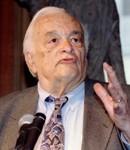
Photo by Mike Segar/Reuters
William Spencer Vickrey, a consultant at RAND in 1967 and 1968, brought innovative analysis to the problems of incomplete, or asymmetrical, information. He shared the 1996 Nobel Prize in Economics with British economist James A. Mirrlees.
Vickrey was educated at Yale University (B.S., 1935) and Columbia University (M.A., 1937; Ph.D., 1947), where he taught throughout his career. A Quaker, he was a conscientious objector during World War II and spent those years performing public service and developing an inheritance tax for Puerto Rico.
Vickrey had a keen interest in human welfare, often choosing projects with practical applications. His studies of traffic congestion concluded that pricing on commuter trains and toll roads should vary according to usage, with higher fees levied during peak-use periods. This congestion pricing was later adopted by electric and telephone utilities and airlines. In his doctoral thesis, published as “Agenda for Progressive Taxation” (1947), he advocated an “optimal income tax” that would be based on long-term earnings rather than on yearly income.
Oliver Williamson

Oliver Williamson, a consultant to RAND from 1964 to 1966, shared the Nobel Prize in Economics with Elinor Ostrom in 2009. Williamson was awarded the prize for his “analysis of economic governance, especially the boundaries of the firm.”
Williamson received an B.Sc. in management from the MIT Sloan School of Management in 1955, an M.B.A. from Stanford University in 1960, and a Ph.D. from Carnegie Mellon University in 1963. From 1965 to 1983, he was a professor at the University of Pennsylvania. He has held professorships in business administration, economics, and law at the University of California, Berkeley since 1988 and is currently the Edgar F. Kaiser Professor Emeritus at the Haas School of Business.
RAND bibliographyAdvisors
Ernest Orlando Lawrence
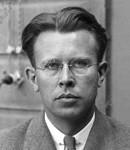
Ernest Orlando Lawrence, a RAND trustee from 1956 to 1958, was the winner of the 1939 Nobel Prize in Physics for his invention of the cyclotron, the first particle accelerator to achieve high energies.
Lawrence earned his Ph.D. at Yale University in 1925. After serving as an assistant professor of physics at Yale in 1927 and 1928, he went to the University of California, Berkeley, as an associate professor and became a full professor there in 1930. He built the Radiation Laboratory at Berkeley in 1936 and became its director.
During World War II, Lawrence worked with the Manhattan Project as a program chief in charge of the development of the electromagnetic process of separating uranium-235 for the atomic bomb. In 1957, he received the Fermi Award from the U.S. Atomic Energy Commission. Besides his work in nuclear physics, Lawrence invented and patented a color-television picture tube. He leaves many namesakes: Lawrence Berkeley Laboratory at Berkeley; Lawrence Livermore National Laboratory at Livermore, California; and element 103, lawrencium.
Edwin Mattison McMillan
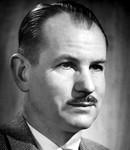
Edwin Mattison McMillan, a RAND trustee and consultant from 1959 to 1969, shared the Nobel Prize in Chemistry in 1951 with Glenn T. Seaborg for his discovery of element 93, neptunium, the first element heavier than uranium.
McMillan was educated at the California Institute of Technology and at Princeton University, where he earned a Ph.D. in 1932. He then joined the faculty of the University of California, Berkeley, and became a full professor in 1946 and director of the Lawrence Radiation Laboratory in 1958. He served as a member of the General Advisory Committee to the U.S. Atomic Energy Commission from 1954 to 1958.
McMillan served as chairman of the National Academy of Sciences from 1968 to 1971.
RAND bibliographyCharles Hard Townes
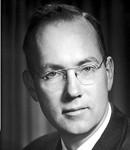
Charles Hard Townes, a RAND trustee from 1965 to 1970, was a joint winner (with the Soviet physicists Aleksandr M. Prokhorov and Nikolay G. Basov) of the Nobel Prize in Physics in 1964 for his role in the invention of the maser and the laser.
Townes studied at Furman University (B.A., B.S., 1935), Duke University (M.A., 1937), and the California Institute of Technology (Ph.D., 1939). In 1939, he joined the technical staff of Bell Telephone Laboratories, Inc., where he worked until 1948, when he joined the faculty of Columbia University.
From 1959 to 1961, Townes served as vice president and director of research of the Institute for Defense Analyses, Washington, D.C. He was then appointed provost and professor of physics at the Massachusetts Institute of Technology. In 1967, he became a professor at the University of California, Berkeley, where he initiated a program of radio and infrared astronomy that led to the discovery of complex molecules (ammonia and water) in the interstellar medium.